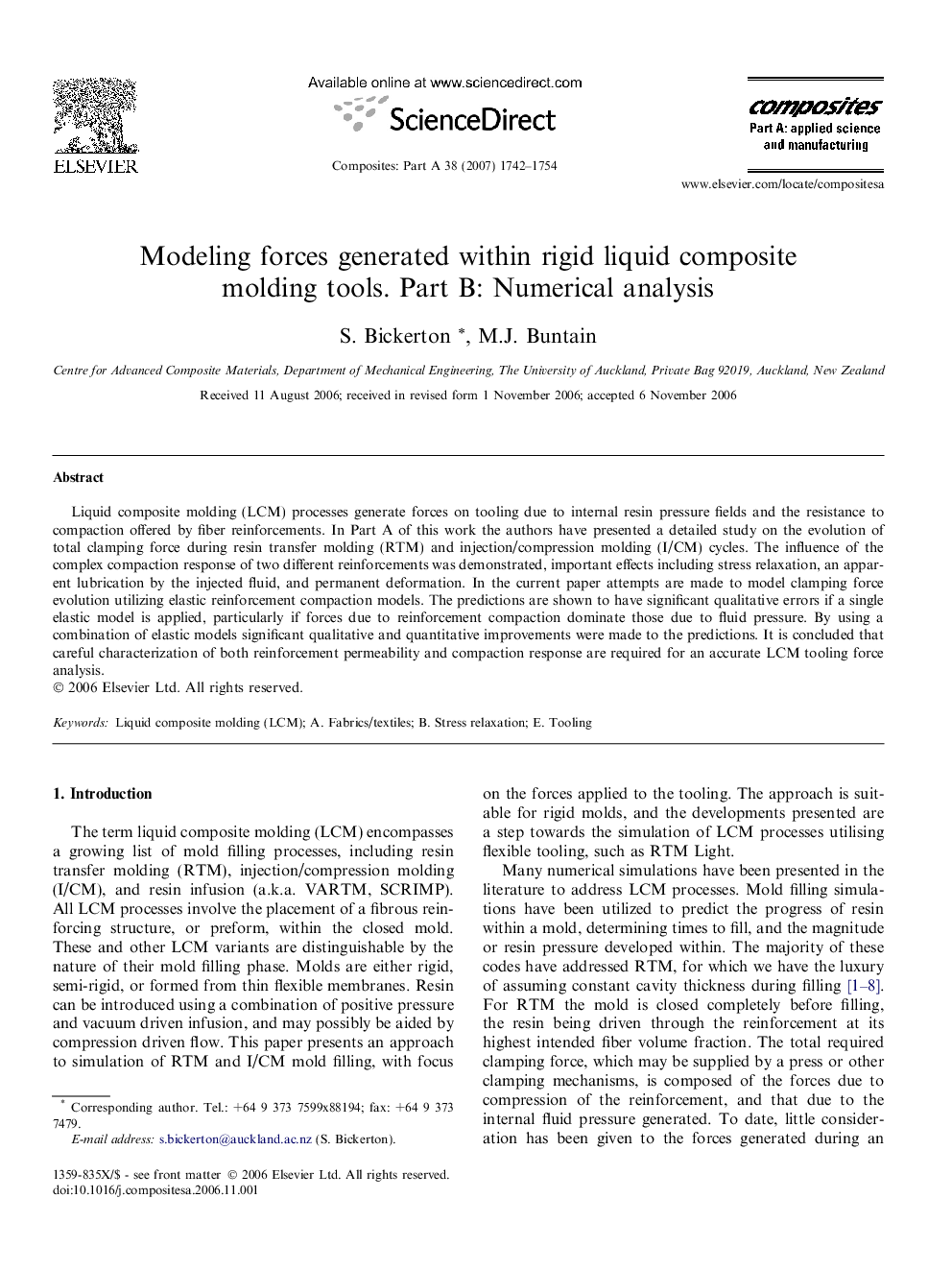| Article ID | Journal | Published Year | Pages | File Type |
|---|---|---|---|---|
| 1467680 | Composites Part A: Applied Science and Manufacturing | 2007 | 13 Pages |
Liquid composite molding (LCM) processes generate forces on tooling due to internal resin pressure fields and the resistance to compaction offered by fiber reinforcements. In Part A of this work the authors have presented a detailed study on the evolution of total clamping force during resin transfer molding (RTM) and injection/compression molding (I/CM) cycles. The influence of the complex compaction response of two different reinforcements was demonstrated, important effects including stress relaxation, an apparent lubrication by the injected fluid, and permanent deformation. In the current paper attempts are made to model clamping force evolution utilizing elastic reinforcement compaction models. The predictions are shown to have significant qualitative errors if a single elastic model is applied, particularly if forces due to reinforcement compaction dominate those due to fluid pressure. By using a combination of elastic models significant qualitative and quantitative improvements were made to the predictions. It is concluded that careful characterization of both reinforcement permeability and compaction response are required for an accurate LCM tooling force analysis.
